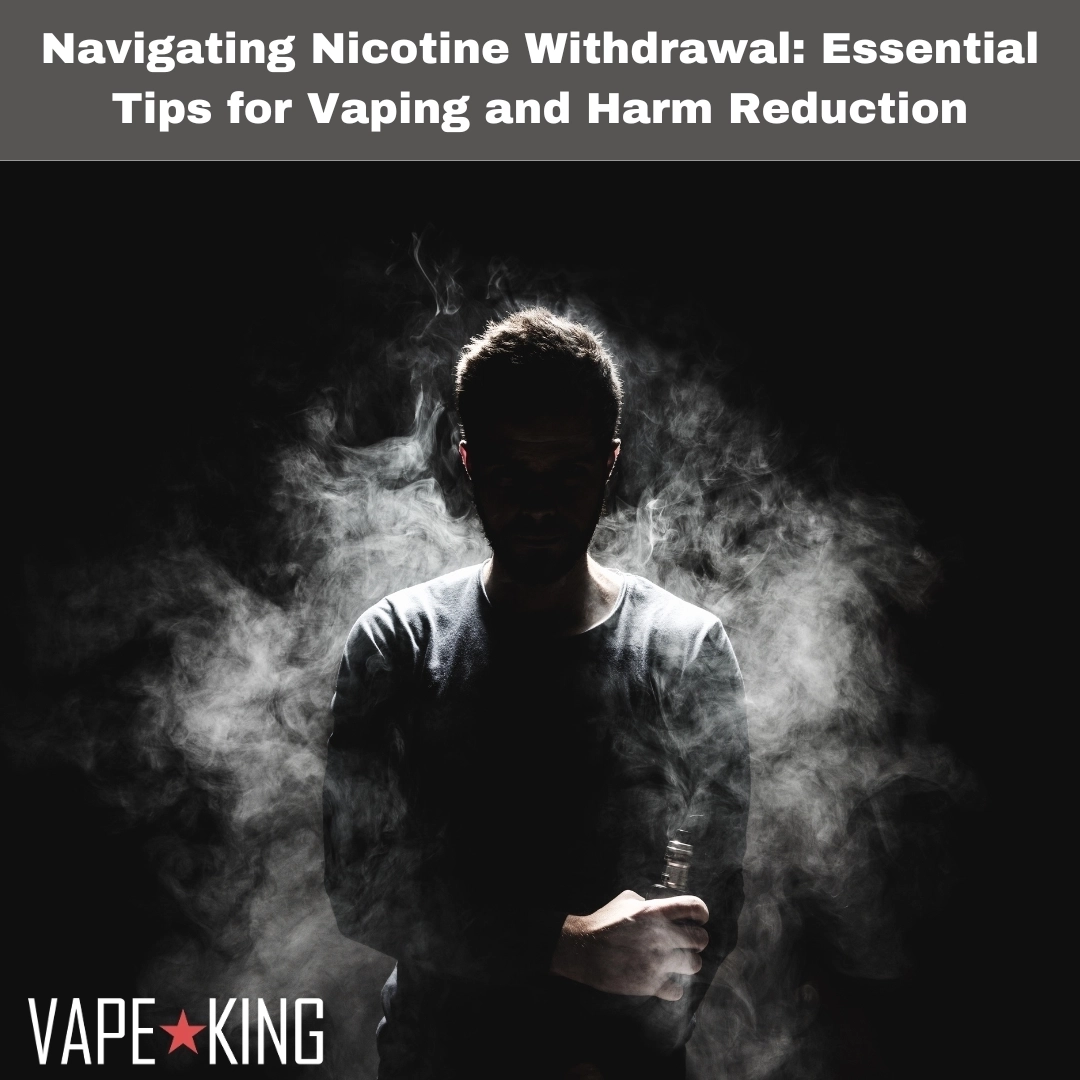Navigating Nicotine Withdrawal: Essential Tips for Vaping and Harm Reduction

Navigating the realm of nicotine dependency can be intricate, especially for those venturing into vaping as a means of harm reduction. Amidst the transition, individuals encounter the formidable obstacle of nicotine withdrawal. Understanding this process, implementing effective strategies, and embracing supportive measures can significantly bolster one's journey toward liberation from nicotine addiction while mitigating potential health risks. Whether contemplating the switch to vaping or already traversing the path toward a nicotine-free existence, the following insights can serve as invaluable companions on the road to enhanced well-being.
Comprehending Nicotine Withdrawal Nicotine withdrawal stands as a pivotal facet of the journey toward a tobacco-free life, whether transitioning from conventional cigarettes to vaping or contemplating complete nicotine cessation. As a highly addictive substance, nicotine fosters a physiological dependency, prompting a cascade of reactions when its regular intake is disrupted. Withdrawal symptoms, ranging from irritability to strong cravings, underscore the body's adjustment to nicotine deprivation. It's essential to recognize that while withdrawal is a temporary phase, its challenges can vary in intensity and duration among individuals. Typically, symptoms peak within the initial days of abstinence, gradually diminishing over several weeks. Yet, the psychological aspect of craving may persist long after physical symptoms wane.
Vaping's Role in Harm Reduction Vaping emerges as a prominent strategy for harm reduction, offering a less detrimental alternative to traditional tobacco smoking. At its core, harm reduction aims to minimize adverse consequences associated with behavior, prioritizing harm minimization over complete abstinence. Within the realm of nicotine consumption, vaping serves as a transitional tool, facilitating a shift toward a less harmful nicotine delivery method compared to combustible cigarettes. Notably, vaping eliminates many harmful chemicals produced through tobacco combustion, presenting users with cleaner nicotine ingestion. Furthermore, the customizable nature of vaping enables users to regulate nicotine intake, fostering gradual reduction—a critical facet of harm reduction and the journey toward nicotine liberation.
Strategies for Gradual Nicotine Reduction Initiating a journey toward reduced nicotine consumption is commendable for individuals pursuing harm reduction through vaping. Employing gradual nicotine reduction strategies allows users to taper their nicotine intake at a pace aligned with their comfort level.
Here are some effective strategies to consider:
- Opt for Lower Nicotine Strengths: Begin with e-liquids featuring lower nicotine concentrations, gradually transitioning to weaker options to diminish dependence.
- Monitor Nicotine Intake: Track vaping habits and nicotine consumption patterns to gain insights, facilitating informed decisions on adjusting nicotine levels.
- Establish Realistic Goals: Set attainable milestones for reducing nicotine intake, ensuring a steady and manageable progression.
- Extend Vaping Intervals: Increase the duration between vaping sessions to disrupt the cycle of constant nicotine exposure and facilitate gradual dependency reduction.
- Experiment with Dilution: Explore diluting e-liquids to achieve lower nicotine concentrations, allowing for tailored reduction strategies.
- Seek Professional Guidance: Consult healthcare professionals or vaping experts for personalized advice on nicotine reduction, ensuring a safe and effective approach.
- Hydration and Engagement: Stay hydrated to alleviate withdrawal symptoms, while engaging in activities to distract from cravings and enhance overall well-being.
Choosing the Right Vaping Device Selecting an appropriate vaping device is paramount in the harm reduction journey, catering to diverse preferences and nicotine delivery requirements.
Pod systems and mods represent two primary device categories:
- Pod Systems: Compact and beginner-friendly, pod systems feature pre-filled or refillable pods, prioritizing convenience and simplicity.
- Mods: Offering versatility and customization options, mods allow users to adjust settings like wattage and airflow, accommodating a broader array of e-liquids.
Nicotine Delivery Consider your preferred inhalation method. MTL devices replicate the sensation of smoking traditional cigarettes, making them ideal for those transitioning. DTL devices offer a more direct lung hit and are preferred by seasoned vapers.
Nicotine Salts Vs. Freebase Nicotine:
Nicotine salts, commonly found in pod systems, provide a smoother throat hit and faster absorption, making them suitable for higher nicotine levels. Freebase nicotine is preferred for lower concentrations and a traditional throat hit.
Battery Life And Charging Take into account the battery life, especially for heavy vapers. Devices with larger or replaceable batteries may be preferable. Quick charging features can also be beneficial.
Coil Resistance And Wattage Range Understanding your device's coil resistance and wattage range is crucial. Different coils are designed for specific wattage levels, affecting vapor production and nicotine delivery.
Embarking on the journey to nicotine freedom through vaping involves various challenges and victories. Understanding nicotine withdrawal, utilizing vaping for harm reduction, implementing gradual nicotine reduction, selecting the right vaping devices, and embracing healthy lifestyle changes are all vital aspects of this transformative process. As you navigate these complexities, remember to approach the journey with patience, resilience, and a dedication to self-improvement.
By fostering a supportive network, celebrating milestones, and seeking professional guidance as needed, you can navigate withdrawal with greater ease. Your commitment to this journey signifies a profound investment in your well-being, paving the way for a brighter, nicotine-free future.
By embracing these insights and strategies, individuals embarking on the path to nicotine reduction through vaping can navigate the journey with greater confidence, resilience, and ultimately, success.
No posts found
Write a review


